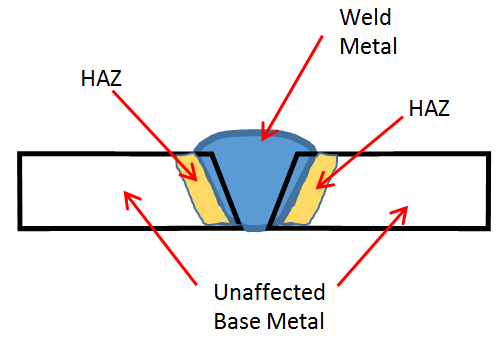
The Significance of Studying the Heat-Affected Zone of Welded Pipe Welding
Welding heat-affected zone(HAZ) is different from welding seam. Welding seam guarantees performance requirements through chemical composition adjustment, redistribution and proper welding process, while the performance of heat-affected zone cannot be adjusted by chemical composition. This is due to the microscopic effect of thermal cycling. Due to the uneven distribution of the structure, for general welded structures, the hardening, embrittlement, toughening and softening of the heat-affected zone, as well as comprehensive mechanical properties, corrosion resistance and fatigue properties, are mainly considered, which should be determined according to the specific application requirements of the welded structure.
A complete high-frequency welded pipe weld (ERW pipe) is composed of a fusion zone and a heat-affected zone. The fusion zone is a narrowly defined weld. Welding theory and practice point out that the quality of welding depends not only on the weld, but also on the heat-affected zone, sometimes heat-affected The problem of the zone is much more complicated than that of the weld, which is especially obvious when welding high-strength alloy steel pipes. Many failures of oil pipes and high-strength alloy steel pipes prove that the problem often lies in the heat-affected zone.

Therefore, studying the structure and performance changes of heat-affected billets is of great significance to the welding strength and quality of welded pipes. The structure of the heat-affected zone of low-carbon equivalent welded pipes, and the structure and morphology of the welded heat-affected zone are closely related to the carbon equivalent of steel. The welding heat-affected zone of the longitudinally welded pipe belongs to the category of low carbon equivalent, which is composed of coarse grain area, phase change recrystallization area, incomplete recrystallization area, recrystallization area and age embrittlement area.
The temperature in the superheated zone is between 1400 and 1100°C. The closer to the fusion zone, the higher the temperature, which manifests as some refractory points on the solidus line, such as carbides and oxides that melt into austenite and austenite crystals. Coarse grains, coarse austenite tends to form overheated Widmanite structure during cooling, resulting in a decrease in toughness.

The phase change recrystallization zone, the temperature is between 1100 ~ 850 °C, when heated, the recrystallization phase change occurs, so that the grains are refined, which is equivalent to the structure of low carbon steel after normalizing, and has good comprehensive mechanical properties. In the incomplete recrystallization zone, the temperature is between 850 and 700°C. Only part of the metal in this zone undergoes recrystallization phase transformation. The coarse and fine grain regions of the original ferrite coexist, and the mixed mechanical properties are poor.
In the recrystallization zone, when the temperature is between 700 and 500°C, the internal structure of the metal will not change after heating, only the shape of the crystal grains will change. It is an equiaxed ferrite crystal grain, which is stronger and harder than the base material Low, plasticity and toughness increase. It is the softening zone and the embrittlement zone of the weld. The temperature is between 500°C and room temperature. The metal structure is close to the base metal. The longer the storage time, the closer the structure and performance to the base metal. Through the analysis of the structure of the welding HAZ, not only the welding process can be improved, but also the formation and distribution of the welding stress of the welded pipe can be understood.


